Smells Like Artistic Spirit: The Institute for Art and Olfaction
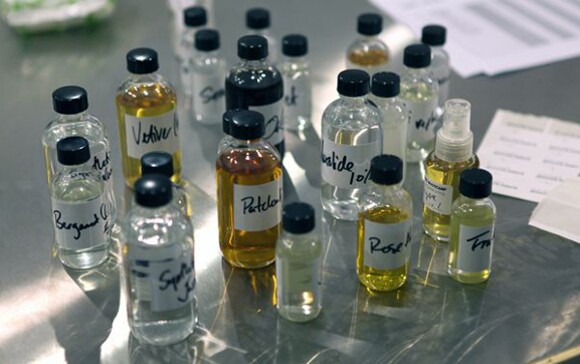
High above the gritty streets of downtown L.A., ensconced in one of several art and design studio spaces ringing the 11th floor of the L.A. Mart, is the Institute for Art and Olfaction. Part romper room, part science lab, part conceptual art atelier, and part classroom, the IAO is both enigmatic and inviting -- a place for anyone to explore the art of scent and perfumery. The love child of artist Saskia Wilson-Brown, the IAO is born out of her desire to learn a new medium. Originally a novice to the world of perfumery, Wilson-Brown's plan was a simple one: surround herself with knowledgeable people; bring unique ideas and perspectives to the table; collaborate. Sooner or later, one becomes an expert just by paying attention. Sometimes knowing nothing is the freshest perspective of all, because one's creativity is not circumscribed by pesky preconceptions about what's possible.
It's helpful to think of scents as limited edition artwork, but in bottles. Yet unlike a static image or object, a scent can be external, indiscriminate, even aggressive. "There's no escaping perfume. If it's done right, it can be an act of protest."
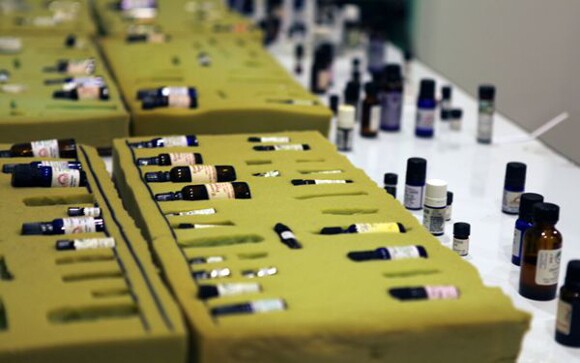
WIlson-Brown went to art school, and subsequently also worked in the film business, indie and otherwise. She became interested in the art of perfuming and she wanted to learn more. What started as a low-level curiosity soon blossomed into a full blown obsession. When she first sought to learn about the art and science of perfumery, she soon found out that the only place to learn was in the South of France -- a romantic but prohibitively fancy, expensive, (potentially elitist), and inconvenient obstacle. So she started to teach herself. She got pretty far on her own, but it soon became apparent she needed some mentoring. To make matters worse, it wasn't even traditional perfumery that she had in mind. She wanted to work conceptually, narratively, even transgressively. She was looking to learn the rules solely in order to break them as soon as she possibly could. So as you might imagine, it was hard to find a production partner who was both skilled and sufficiently open minded.

That's when she met Josh Meyer, who was to become her adviser, collaborator, and fellow perfume maker. He had created a project called "Imaginary Authors" -- a conceptual perfumery exercise in a literary framework. "Imaginary Authors is born from the concept of scent as art and art as provocation," he says. "Like a good book, in these bottles are layered narratives that take you to new places. Each fragrance follows a compelling storyline." "Finding Josh made all the difference," Wilson-Brown says.
Together, they, and the rest of the dedicated Institute fellows, pursue the same kind of existential expressions that fine art and poetry have been after for ages. Avant-garde art magazine Visionaire's Issue No. 42 was called "Scent" and featured 21 original, evocative, non-traditional scent experiences by way of tiny capsules. For her 2011 exhibition at Susanne Vielmetter, painter Whitney Bedford expanded the range of viewer experience by collaborating on a thematic perfume with which to suffuse the gallery. John Waters paid tribute to a vintage technology that pumped odors into movie theaters with his "Smell-O-Vision"-style enhanced 1982 release of "Polyester." There's a wonderful scene in the 1971 classic "Harold & Maude" featuring a dreamy invention called "Odorifics." And oh yeah, a little someone called Marcel Proust.
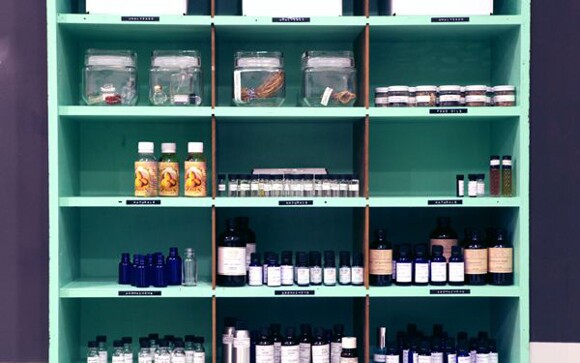


"Sense-memory is subjective, but the neuroscience hasn't even reached consensus on how we smell -- it's the least understood sense," says Wilson-Brown. " At a fundamental level, the science is old school -- it has to be quantifiable and replicable. "It's impossible to really grasp all the aspects of every material. It's not as intuitive as painting, as you have to have some sort of plan going into each new scent." When we met recently, Saskia had in fact just returned from Paris, where she was meeting with the 5eme Sens (Fifth Sense) to promote olfactory education. It's ironic, because Paris is the seat of the high-brow perfume illuminati that once challenged her; but as she sees it, "to work outside the system, first you have to understand it. Then you can blow it up."
!["Secret Editions [01] Cult," by Josh Meyer.](https://kcet.brightspotcdn.com/dims4/default/f78f11a/2147483647/strip/true/crop/580x363+0+0/resize/580x363!/quality/90/?url=http%3A%2F%2Fkcet-brightspot.s3.us-east-1.amazonaws.com%2Flegacy%2Fsites%2Fkl%2Ffiles%2Fatoms%2Farticle_atoms%2Fwww.kcet.org%2Farts%2Fartbound%2Fimages%2FIAO7.jpg)
"Cult" was the IAO's first public project, Secret Editions No. 1. A collaboration with Meyer and the filmmaker Mark Harris, it was intended to be overwhelming, overpowering, a statement. The flip side is, no one really likes how it smells -- which is largely like civet. "People accept that in art beauty is not the only legitimate goal, but in perfume you aren't really allowed to escape from the pretty," says Wilson-Brown.
But what if scent really could be conceptualized as a creative tool, like painting or anything else? What would that be like? IAO is starting to answer that question. Austin Young's "Accident" is Secret Editions No. 2. Currently in production as of this writing, the scent will be ready in early August, in time for the final night of the participatory musical theatre "TBD." Young, a photographer, filmmaker, stylist, activist, and fearless experiment (who also has his studio on the 11th floor of the L.A. Mart) explains the project this way. "What if [trans-culture icon] Squeaky Blonde was coming out of a gas station and it suddenly blew up. What would that smell like?"
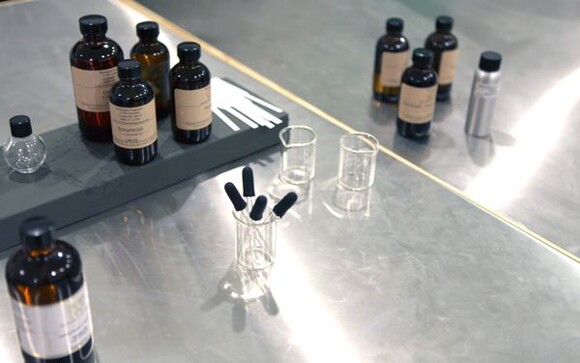
Secret Editions No.3 will be "Eau de Construction," a component of artist (and yes, fellow 11th-floor tenant) Bettina Hubby's "Dig the Dig" residency at the Santa Monica Museum of Art, in which she explores the experience of urban construction through a variety of media, including documentation, curation, and sustained interaction with the workers, public, and civic planners. For her scent, rather than evoke the scene at the site, Hubby has interviewed the workers as to what they themselves would like to smell like. That promises to be fascinating.
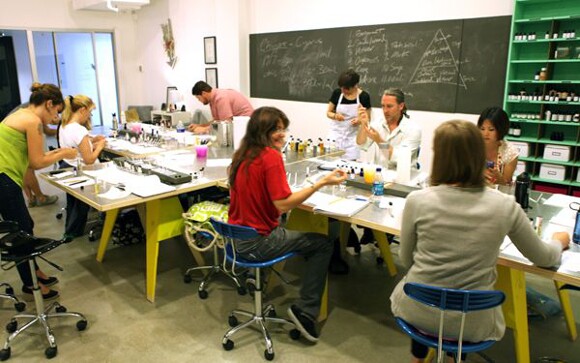
And in perhaps their most ambitious project to date, the IAO will be staging something really unique at the Hammer Museum in January 2014. In a cross-platform collaboration, they will be recreating a lost work by Sadakichi Hartmann (1867-1944), a bohemian writer artist type from New York City. It turns out that he had worked very hard on a "perfume concert" wherein the narrative would waft across the crowd in place of music. He ended up doing it at a Longshoreman's club, and it was by all accounts a total disaster. A friend and collaborator of Saskia's had access to Hartmann's whole archive, containing extensive notes not unlike like sheet music, except that all he described was what he wanted it to smell like. There were no actual formulas, so they have to recreate his intentions for a procession of scenes evoking "a trip to Japan." In fact, they aren't so much recreating as updating the story for the modern era. There might be elements like the LAX super shuttle, or airplane food -- and no doubt, Tokyo smells a bit different now than in Hartmann's early 20th century experience. There may even be the overwhelming cigar smoke that so derailed the original performance. It will feature Gil Kuno on sound, a foley artist on ambience, and a hefty dose of imagination. Remember, when you're getting ready to attend, forego your daily spritz -- it'd be like talking during a movie.
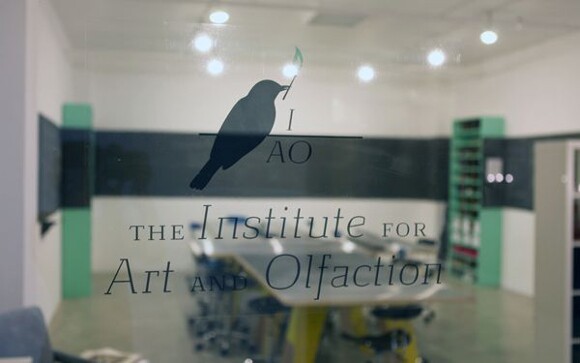
For updates on all the IAO's activities, including workshops and public programs, visit their website or follow them on Facebook.
Dig this story? Sign up for our newsletter to get unique arts & culture stories and videos from across Southern California in your inbox. Also, follow Artbound on Facebook and Twitter.